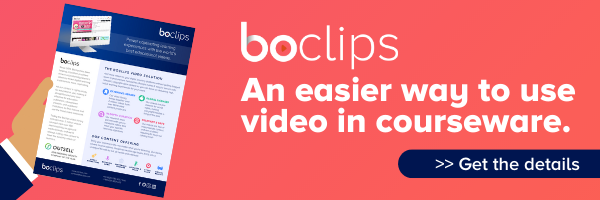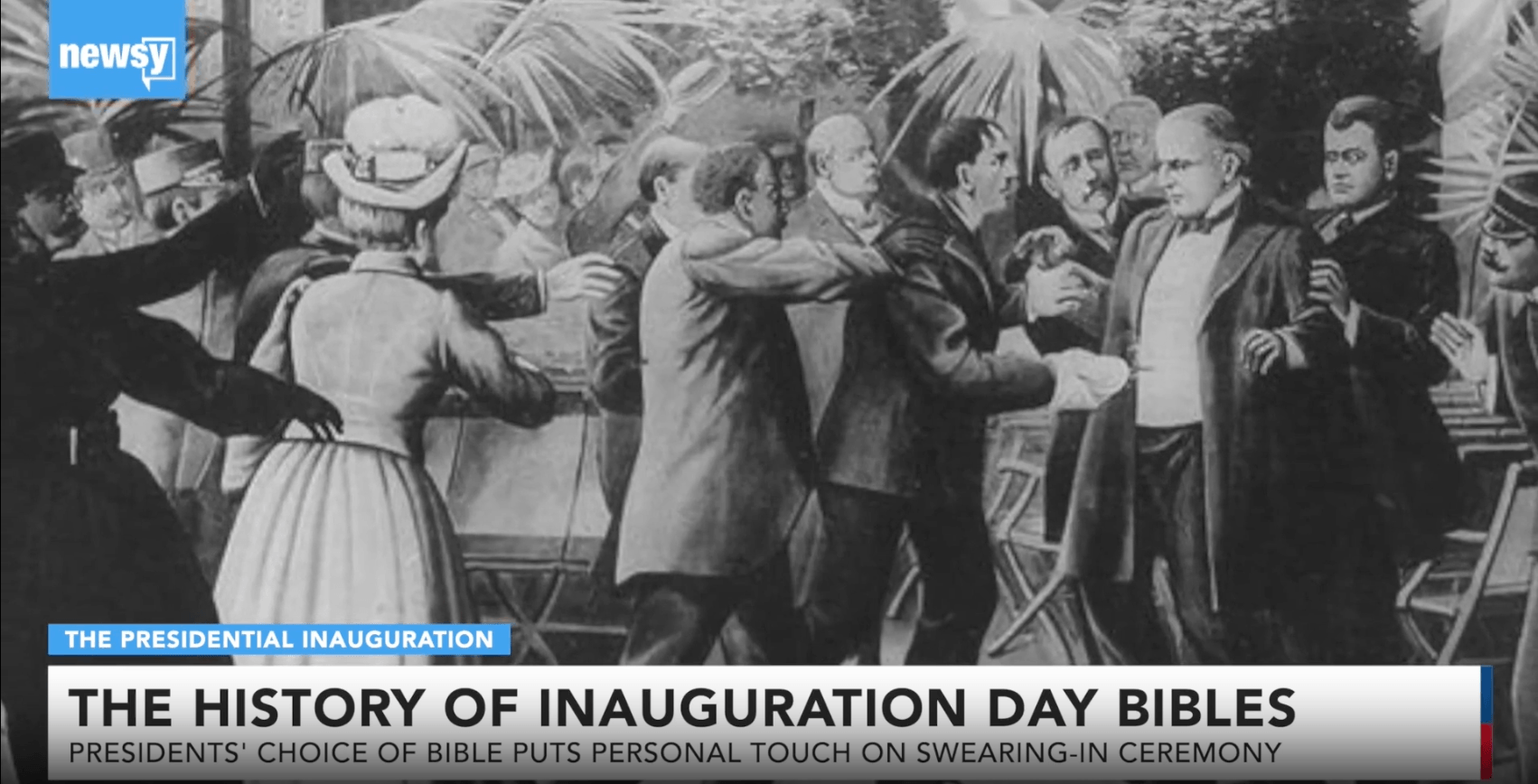Videos aren't a new content type for academic publishers. They’ve produced and provided video content for years for educators and curriculum designers. First, they met the demand by pumping out CD-ROMs and DVDs and packaging them in the back of textbooks, full of "interactive" activities and videos. Back in those days, teachers would take their students down to the computer lab and walk them through an interactive or video during class time.
Then, the Internet became more accessible, and they were able to stop producing CD-ROMs and could instead create a website dedicated to a specific textbook and edition, where they’d post links to additional multimedia content.
<<Want to find out more about a curated, copyright-cleared solution to your video procurement needs? Schedule a consultation>>
Video has been a part of publishers’ workflow, editorial calendars, and marketing for years, but always as a supplemental feature. But now, academic publishers and courseware creators are developing content that leads with video. From Videos in Clinical Medicine published by the New England Journal of Medicine to nearly every course on the commercial eLearning platform Udemy, video is starting to take center stage as a core content type. It addresses the learning needs of a broader array of students, provides teachers with the materials needed to convey the learning objectives, and, most importantly, meets students’ expectations for learning.
%20(1)-1.jpg?width=639&name=glenn-carstens-peters-npxXWgQ33ZQ-unsplash%20(1)%20(1)-1.jpg)
Video Content Addresses a Broad Base of Learner Needs
The advantages of using video in teaching and learning are increasingly recognized by educators and publishers alike. Video has the unique ability to address multiple facets of sensory experience within a single medium, accommodating a variety of learning styles and therefore addressing a broader base of learners. Videos can help students who need visual and auditory materials for learning, as well as provide logical and emotional learners access points they need to understand the major concepts and learning objectives.
Video is already the core material in a lot of other educational markets, like commercial eLearning. It's an easily accessible medium, thanks to technology, and provides an optimal experience that can meet the needs of students.
New Generation of Teachers Want Digital Content
The new generation of teachers entering the workforce is more digitally focused and isn't afraid of using technology in the classroom. They are always looking for ways to use more of it. Teachers have a greater understanding of the variety of learning styles their students have, and actively try to meet those students where they are. The challenge to curriculum developers and courseware providers, then, is to provide a wide variety of digital content and resources that can be customized by teachers to reach each one of their students, regardless of learning ability and style.
The growth of video in education and demand for it in classrooms isn't surprising. A 2014 study focused on video platforms found that 88% of teachers believe that video improves the educational experience, while 67% felt that teaching would change because of technological advancements. That is precisely where we are in 2020. Teachers are more aware of technology and how it can help their students. They want the ability to custom curate content that not only matches pedagogical intent but is specifically tailored to the resources that a specific student needs to learn. Videos are a huge part of that equation.
Students Expect Digital Content
Studies show that student-centered, active learning improves outcomes. The students of today are Digital Natives. They know nothing about a world where the information you desired wasn't at your fingertips, and they've used video to learn throughout their entire lives. For curriculum developers, educators, and publishers to be student-centered, we need to meet them where they are, and with what they expect.
So, what do they expect? What would the student-centered approach look like today? According to a research study that polled and evaluated K-12 students: social and collaborative, unrestricted by traditional standards, digitally delivered.
It shouldn't be surprising. Just look at TikTok, Snapchat, Instagram: social platforms, where kids get together and consume, share, and talk about digital content, whenever and wherever they want.
What's the most popular type of content consumed on these platforms? Video. 56% of tweens and 69% of teens report consuming digital videos every day.
Video is the most popular medium for the simple reason that it hits all of the student's expectations: you can share videos and discuss them with people around the world, who are learning dynamically from each other.
For curriculum developers and courseware creators, the real focus of all the work they do is on the student. Students are the core market, and therefore publishers and courseware creators need to meet their needs and expectations. It's simple Business 101: if your product doesn't have a market, you don't have a business. Publisher’s and courseware creator’s success now depends on student success - and if they stop giving students the necessary tools for learning, they’ve lost their way.
Why are curriculum designers paying attention to video? It's what they need to address the learning styles of a variety of students. It's what teachers need to provide an interactive, personalized learning experience. And, more importantly, video is a vital component of digitally diverse and interactive learning experience that students demand. It’s essential to reimagine content strategies and focus on providing the type of content the market demands.
Sources
https://www.researchgate.net/publication/283861906_Improving_Learning_with_eTextbooks
www.limelight.com/resources/white-paper/state-of-online-video-2019/
https://edtechnology.co.uk/Blog/why-video-is-the-future-of-he/
Boclips
Boclips is on a mission to make learning more captivating with video with an easier, safer way to access videos from the world’s leading video producers.
- #Video in Digital Learning
- #Classroom
- #Educational Videos
- #Video Content Partners
- #Tips for Using Video
- #Boclips for Publishers
- #Issues in Education
- #Educational Videos by Subject Area
- #News and Announcements
- #Events & Holidays
- #Video and Teaching Tools
- #Teaching Methodologies
- #Education Videos
- #Video and Digital Literacy
- #Short Educational Videos
- #Instructional Design
- #Multimodal Learning
- #Video and Student Safety
- #Accessibility in Education
-3.png?width=390&height=223&name=Untitled%20design%20(2)-3.png)


.png?width=1152&height=660&name=Copy%20of%20Untitled%20Design%20(1).png)




